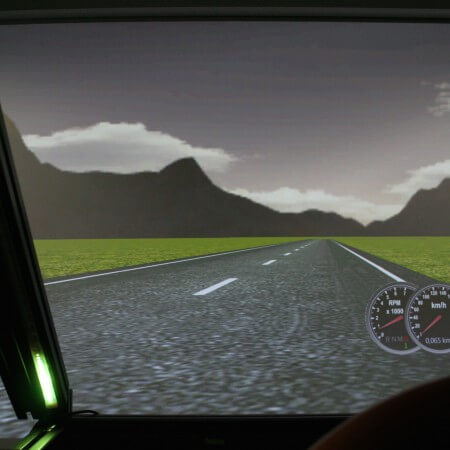In this research stream, we investigate how chasing lights may be used to influence the perceived driving speed. The chase light are implemented as LED stripes mounted on the A-pillar of a vehicle. Another focus of our research is the identification and description of chase light characteristics that modify the effect on perception (e.g., speed or the pattern of the chase light).
The relation between physical speed of a car and perceived driving speed is dependent on a variety of contextual factors. One of these factors is the structure of the scene. Driving on a broad U.S. Highway with five lanes and almost no traffic at 75 mph may not be perceived as very fast. Driving through a narrow Italian alley at the same driving speed may be perceived faster due to the fact that the trees of the alley pass by. A second factor is the contrast of scene. Decreasing contrast, such as fog, may elicit the impression of driving faster. Also luminance, auditory information, or traffic conditions may affect drivers speed perception.

